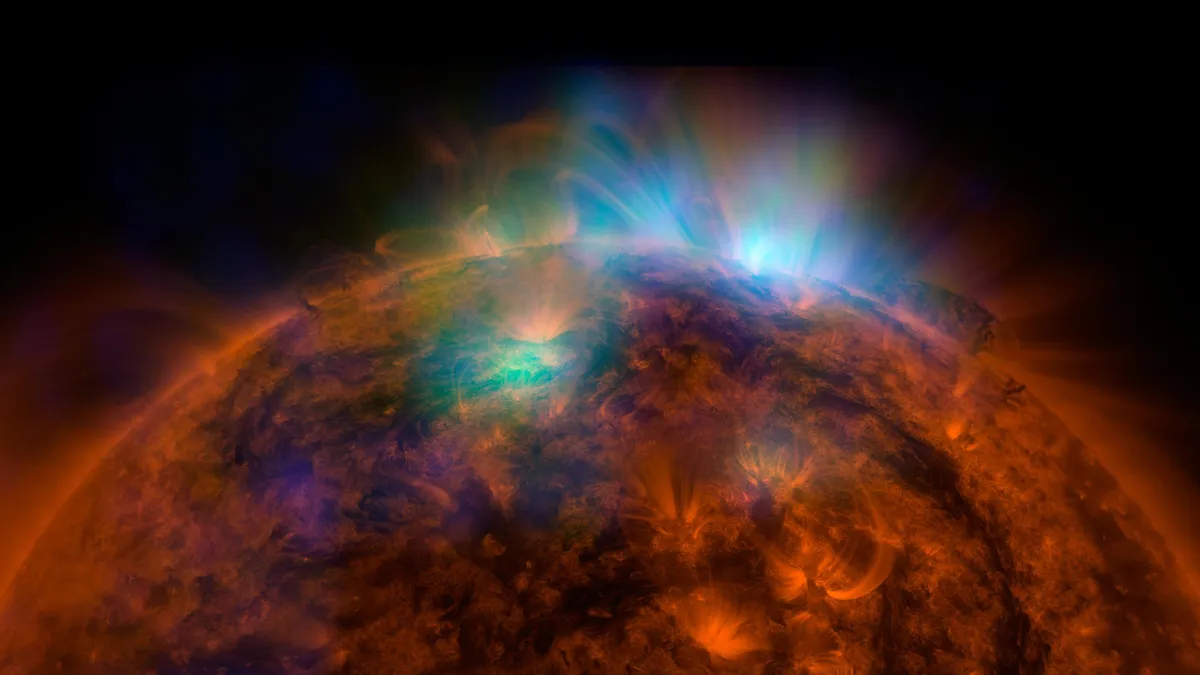Last week, the biennial ICHEP conference hosted the presentation of results from the first data collection period of the AMBER experiment. These results, available in 2023, show preliminary plots of the antiproton formation cross-section—the probability of antiproton formation when a proton beam interacts with helium. Understanding the mechanism of antiproton formation is important for increasing the sensitivity of dark matter searches.
Dark matter, which makes up about a quarter of the mass of the universe, remains a mystery to scientists because it does not interact with the electromagnetic force, making it invisible to direct observation. However, indirect evidence for its existence can be found in cosmic ray data collected by experiments such as the AMS. [Alpha Magnetic Spectrometer, детектор частинок, встановлений на МКС для вивчення космічних променів]. Among these rays are antiprotons, which can be produced not only by primary cosmic rays but also by the interaction of the primary rays with the interstellar medium. Recent AMS observations have shown an excess of antiproton cosmic rays above predicted values, which may indicate the existence of a source such as dark matter.
The AMBER experiment was designed to help solve this mystery. In order to tease apart the standard production method of antiprotons, a good understanding of their standard formation mechanism is required. “By studying the formation of antiprotons, we reduce the uncertainty about the expected background of antiprotons in space, which increases the sensitivity to any exotic signals,” explains David Giordano, researcher of the AMBER experiment.
AMBER, located on the site of the former COMPASS experiment, is a new facility that takes a secondary beam from the SPS and directs it at a variable fixed target in CERN’s North Area. The secondary beam in the SPS (Super Proton Synchrotron) particle accelerator is a stream of particles produced by the interaction of the primary beam of protons accelerated by the SPS with the target. When the high-energy protons in the primary beam collide with the target, they produce a variety of secondary particles, such as pions, kaions, antiprotons and others. These secondary particles can be separated and focused into a secondary beam for further experiments. The secondary beams from the SPS have been used in various experiments at CERN investigating the properties and interactions of elementary particles.
The first phase of the program consists of three experiments: studying the cross-section of antimatter formation, measuring the radius of the proton, and studying the mass-gaining mechanism of hadrons. Last year, a liquid helium target was used to collect data, and the resulting particle tracks were recorded by the AMBER spectrometer.
“One of the most common reactions that leads to the formation of antiprotons in space is the reaction between protons and helium. Before AMBER, there were no experimental data for this reaction in the energy range corresponding to AMS,” Giordano continues.
The results presented at ICHEP, although preliminary, demonstrated the high precision of the AMBER measurements with very low statistical uncertainties. “We had data in 2024 using hydrogen and deuterium as targets,” Giordano said.
The plan is to use the hydrogen data to study proton-proton collisions, the most common reaction underlying the formation of antiprotons in space. The deuterium data will allow physicists to compare the rate of antiproton formation in proton-proton collisions with the rate of proton-neutron collisions, helping to discover a little-studied formation asymmetry.
Source: Port Altele
